Mauthausen camp life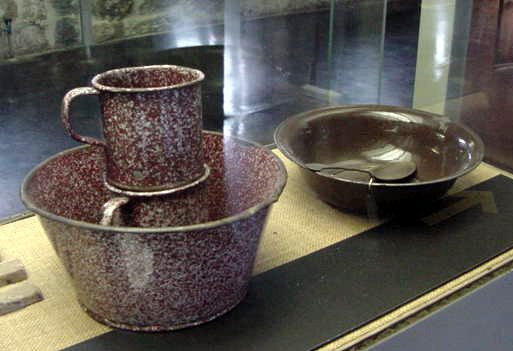 Each prisoner had his own bowls and a cup and a spoon, which were kept in wooden lockers in the barracks. At mealtime, the prisoners would take their bowls and cups with them to the chow line where they were served their food. The barracks had a room with tables and stools where the prisoners ate. 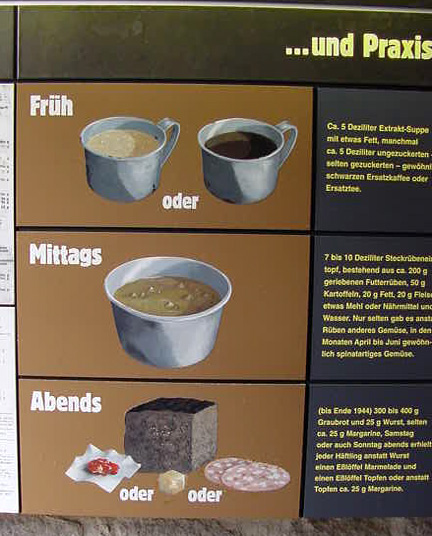 This poster in the Mauthausen Museum shows the daily diet of the prisoners. In the morning they had a cup of ersatz coffee (substitute coffee) which was made from grains and chicory. At noon, the prisoners were served a large bowl of vegetable soup made from potatoes, turnips, carrots, cabbage or beets. In the evening, the prisoners had a large chunk of heavy whole grain bread with either a tablespoon of jam or a tablespoon of margarine or a couple of slices of sausage. The German common criminals, who worked as Kapos in the camp, assisting the SS in supervising the prisoners, ate much better food. They cooked for themselves in the barracks and didn't eat with the political prisoners. 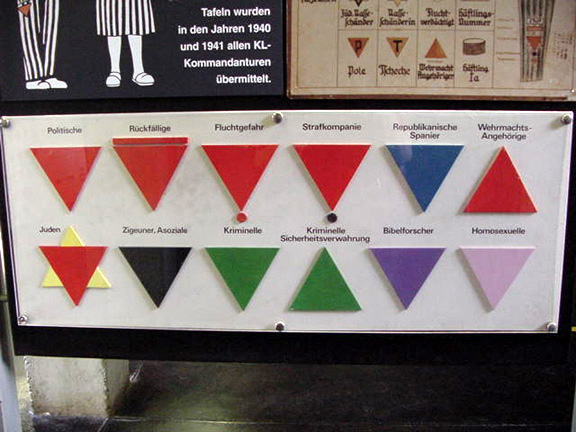 The photo above shows a chart in the Mauthausen museum which has the different colors of the badges worn by the prisoners. The small dot below the badge meant that the prisoner had been assigned to the punishment detail in the camp; these prisoners had to work in the quarry and at the end of the day, they were forced to carry a heavy granite rock up the steep stairs out of the camp. A bar over the triangle meant that the prisoner had been released, but had subsequently been returned to the camp. Note the blue triangle worn by the Spanish Republicans. In the other camps, for example Dachau, the blue triangle was worn by foreign workers who had been conscripted by the Germans from occupied countries. The Jews wore two triangles, one yellow and one of another color, usually red which was for political prisoners. Black was for Gypsies and asocials. Green was for common criminals; purple was for Jehovah's Witnesses and pink was for homosexuals. 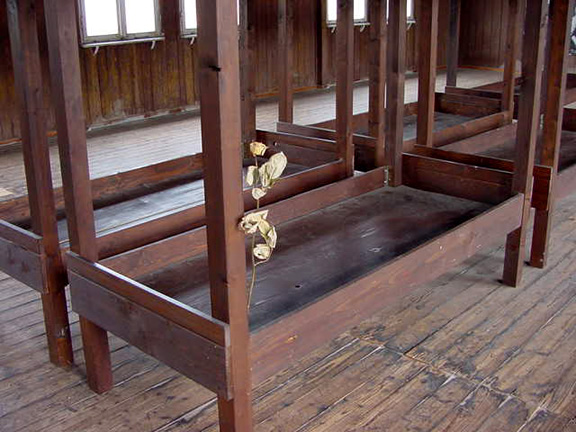 The prisoners at the Mauthausen concentration camp slept in bunk beds, stacked up in tiers of three. At first, there were 140 prisoners in each barrack, but as the war progressed and prisoners from other camps were brought to Mauthausen, there were as many as 1,000 men crowded into each barrack. The barracks were constructed of wood with no insulation in the walls, so it was cold in the winter and hot in the summer, although there were plenty of windows that could be opened. 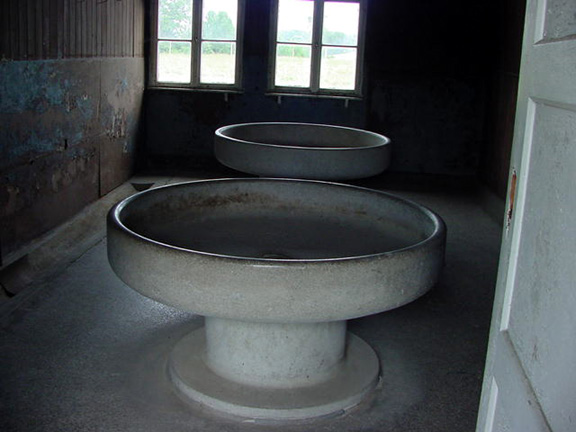 Each barrack had its own toilet facilities and large communal wash bowls like the two shown above. Mauthausen had flush toilets in the washrooms, just like Dachau and the other camps, but none are shown in the reconstructed barracks there.  The work shoes worn by the prisoners had wooden soles and canvas or leather uppers. A few of the prisoners wore wooden shoes like the ones made in Holland, as shown in the Museum display case in the photo above. 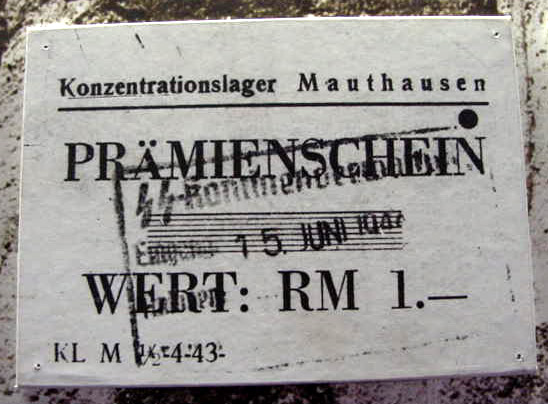 The camp money shown in the photo above is displayed in the Mauthausen museum. The prisoners were paid a small amount of this fake money which could only be spent in the camp. There was a camp canteen where the prisoners could buy cigarettes, toilet articles or canned food. The privileged prisoners were allowed to visit the camp brothel where they could buy the services of a prostitute with the camp money that they had earned by working. Main EntranceThe SS yardPrisoners' GateGas ChamberBarracksBeautiful DoorsCatholic ChurchHome |